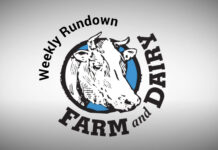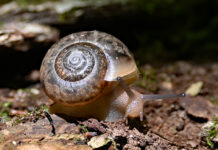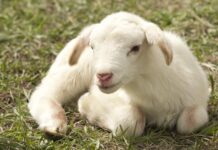I am writing this article in mid-May when the high temperature is about 60 F. I tend to be somewhat cold-natured and chill easily. Thus, this morning with the dampness and wind stirring, I had to find my jacket. But within the next 2 to 4 weeks, it could be 80 F and 80% humidity, with a temperature humidity index (THI) of 78 as a norm, or it might be similar to mid-May.
One just must be prepared before the heat stress period arrives. The environmental conditions in conjunction with the high metabolic rate of many of today’s dairy cows producing over 100 pounds/day of milk results in a high level of heat to dissipate.
It has also been established that the genetic selection for milk production has reduced heat tolerance. It is generally accepted that dairy cows are under heat stress when the THI reaches 70 to 72 F. Thus, plans need to be in place now as how the cows are going to be kept cool this summer.
Heat stress can have the following impacts on dairy cows:
Reduced milk production
In one study, milk yield decreased by 0.44 pounds/day for each THI unit above 72. With this example, when THI reaches 78, milk yield may decrease 2.5 pounds/cow/day, reducing milk revenue by $0.46/cow/day ($18.50/cwt) or $230/day for 500 cows.
In a more recent study published in the May 2024 issue of the Journal of Dairy Science, energy-corrected milk (ECM) decreased 3.25% for each unit above a THI of 72 for mid-lactation cows. Cows in all stages of lactation were impacted, but the impact differed based on stage of lactation and low versus high THI.
Thus in this example, a herd with an average ECM yield of 85 pounds/cow, heat stress at a THI of 78 could result in a loss of 16.5 pounds/cow/day, $3/cow/day, and $1500/day for 500 cows. Even if the loss in your herd is intermediate of these two studies, the loss mounts up quickly, especially during long periods of heat stress.
Reduced dry matter intake
In the same study mentioned above, DMI was reduced 4.13% for each unit in THI above 72. A classic study published in 2009 revealed that the decrease in DMI only accounts for about 35% of the decrease in milk yield during heat stress. Cows in heat stress experience changes in metabolism to dissipate heat and maintain tissue function at the expense of milk production.
Milk fat and protein concentration have been shown to remain the same, increase or decrease during heat stress. In the study published in May described above, milk protein concentration was reduced but milk fat concentration remained the same.
In most studies, milk fat and protein yields decrease along with the reduction in milk yield. In the May published study, milk protein concentration was 0.13 units lower in heat-stressed cows than cows in a thermoneutral environment.
For a herd averaging 85 pounds/day, this would result in 0.11 pounds/day/cow less protein if there was no change in milk yield or $0.09/cow/day (current market conditions of $0.8345/lb milk protein). But if milk yield dropped 10 pounds (intermediate to above example) with 3.06 versus 2.93% milk protein (no change in milk-fat yield), then protein yield would decline by 0.40 pounds/cow/day ($0.33/cow/day; $165/day for 500 cows).
If milk fat dropped from 3.5 to 3.4% in a similar scenario (no change in milk protein), then milk-fat yield would decline by 0.78 pounds/cow/day, $2.60/cow/day (current market conditions of $3.33/pounds milk fat), or $1300/day for 500 cows. If both milk fat and protein yields dropped using this scenario, milk revenue could decrease by $2.93/cow/day or $1,465/day for 500 cows.
During heat stress, reproductive efficiency declines (pregnancy rates decline) and health risks increase. Pathogen load in bedding increases during the summer and heat stress impairs immune function, leading to increased risk for mastitis. Depressed intake in fresh cows from calving during heat stress increases the likelihood of metabolic diseases.
Thus, the negative impacts of heat stress can be major, some with short term and others resulting in long-term consequences. The impacts can also be additive relative to lost milk revenue and increased health risks.
Preparation now for the following should be evaluated: ventilation and misting strategies in the holding pen and over the feed bunks, fans throughout the freestall housing area and limit over-stocking during the summer.
Changes in feed management will be necessary to protect silage from spoilage (adequate surface removal and surface protection) and increase feeding frequency and push-ups of the TMR.
Perhaps some changes in diet formulation will be needed to maintain fiber intake, increase fiber digestibility, alter nutrient densities for the decrease in DMI and use of some feed additives that may aid cows during such times of modified rumen function and metabolic adaptations.
Summer brings on some welcome changes from the cold winter and fluctuating temperatures and rainfall during the spring, but along with it comes the need for astute management of cows to reduce heat stress.
Hopefully, you will be able to get away with the family this summer and bask somewhere in the sun, but plan ahead in keeping cows cool and comfortable while you are away.













